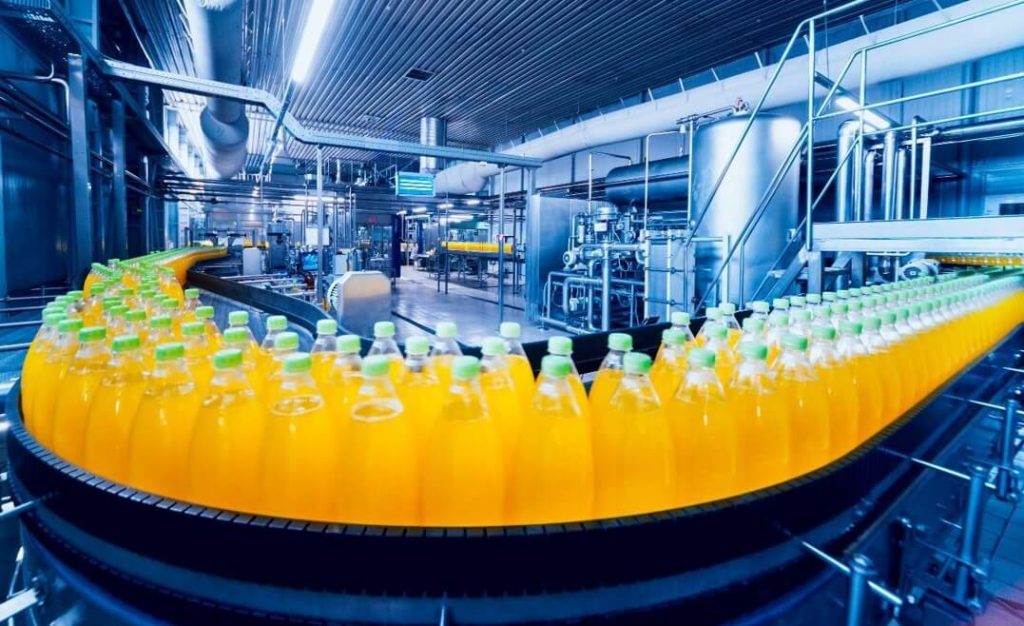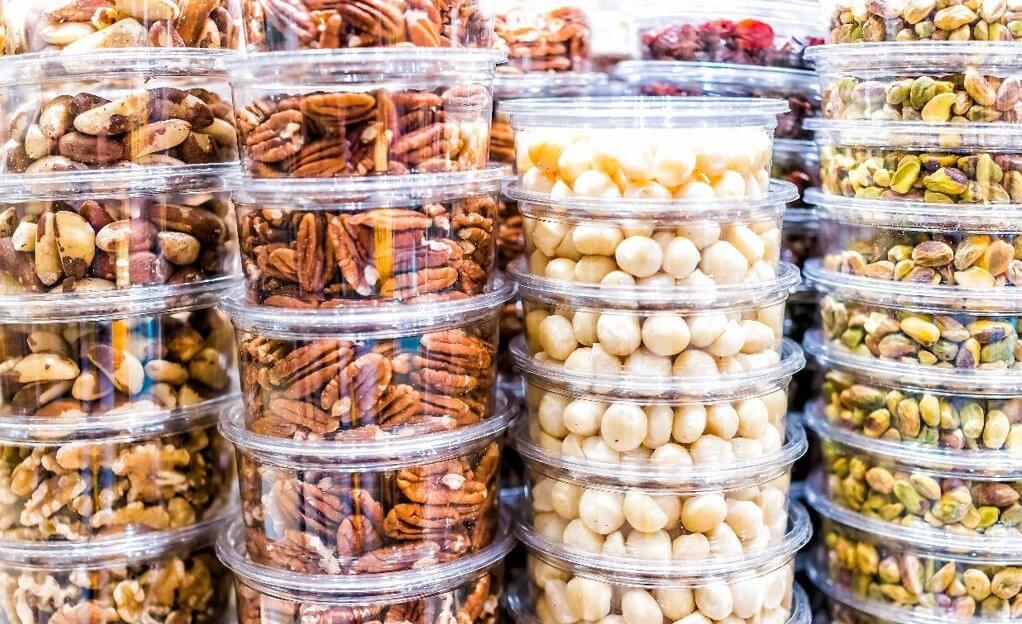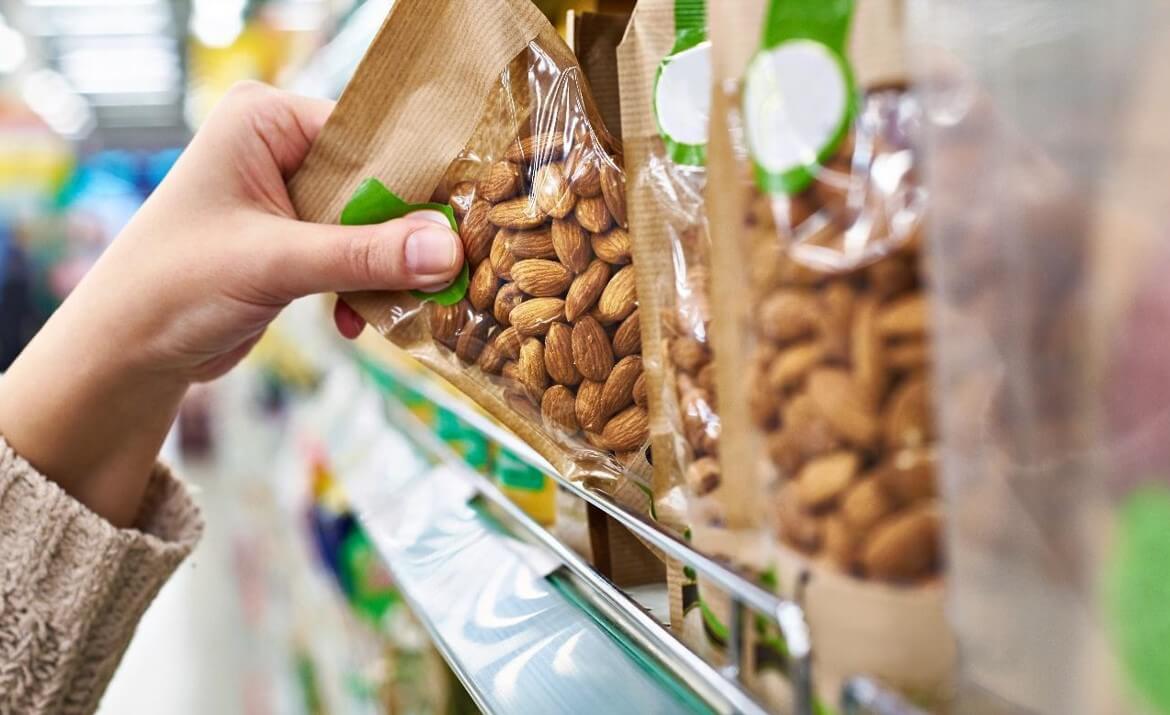Packaging your goods is vital to finishing your food product and can come in many different forms. Many different aspects of food production come into play, and packaging is a marriage between technical and safety requirements and marketing needs for your business.
With the right packaging, you can keep your product safe from contamination and spoilage and properly reflect your brand’s image.
This is why it is crucial to work with the right manufacturer and packing facilities to ensure your product tastes great and looks great inside and out.
Let’s go through some of the most common food packaging materials and their applications.
How Are Products Packaged?
Products are packaged in several ways, and methods vary depending on the goods. For example, solid foods with a long shelf life can often be packaged in a plastic container or cardboard box.
Dried fruits and nuts can be stored in vacuum-sealed plastic bags or rigid plastic containers, depending on the desired shelf life.
Packaging depends on how the goods will travel in transit. If you’re planning to export your packaged food product out of the country, or send it to international distributors, then opt for packaging options that can extend your product’s shelf life and keep it decontaminated during transit.
The most common food packaging materials are plastics, glass, metals, and papers and their composites.
Can You Package Products at Home?
The best method for packaging products is at the proper packaging facilities. While you can package your food product at home, it depends on the product you’re selling.
We highly recommend outsourcing your food packaging and not packaging products at home. When you expand your business to outside clients and retailers, you must follow the proper health and safety protocols for your region.
Whether it’s getting FDA approval or following your region’s health and safety practices, food is packaged to keep it safe and uncontaminated in transit.
That way, it can be safely delivered from the production facility to the retailer and the customer.
Bottles & Jars

Jarred or bottled products both require the proper facilities. This is because packaging butter, liquids, or other goods in a sealed container like a bottle means that all surfaces must be decontaminated.
For example, nut butter should be packaged in an airtight jar sealed upon packaging. Liquids and butter have the potential to be contaminated more easily than solid foods, so they should be handled with care.
If you want to package your goods in food containers like cans, jars, or bottles, you will need the proper facilities to do so. You can outsource this service to a food packaging facility specializing in aseptic packaging.
Aseptic packaging refers to packaging goods while keeping all surfaces fully decontaminated and sterilized. Aseptic packaging helps avoid cross-contamination, which is especially important for foods containing common allergens, like nuts.
Trained professionals must be on-site, and the proper machinery must be used to follow full health and safety protocols.
Boxing
Boxing your product in a boxed structure is another option. This works great for dry foods, like biscuits and cereals, but keep in mind there is typically additional packaging inside the box.
For example, a box of biscuits will need to be stored in a plastic tray, sealed in a plastic bag, and then boxed in cardboard. This is to keep the product’s shape intact and ensure it doesn’t get contaminated.
A cardboard box is one of the most environmentally friendly packaging methods on this list, so it’s a great option if you’re looking for sustainable packaging methods.
Paper bags are also becoming more popular now and can help you reduce the environmental impact of food packaging.
If you want environmentally sustainable packaging methods, it doesn’t just stop at paper and cardboard. Draft a plan for your food product, and see how viable it is to include eco-friendly food packaging.
Plastic Containers

According to the Food Packaging Forum, 27% of the market share of packaging material is rigid plastic, meaning the market still needs plastic containers.
It remains one of the most cost-efficient and sterile ways to package food and give it a longer shelf life.
For any specific news and updates on the world of food packaging, the Food Packaging Forum regularly updates its website on the safety status of food packaging materials.
They cover not only plastics but silicones, can coatings, bioplastics, and more.
Vacuum Sealing
Vacuum sealing helps to prevent any contaminants from entering the product’s environment and keeps it sealed from outside moisture. This method usually uses plastic to seal the goods in a bag.
This is one of the safest and most efficient ways of packaging your goods and keeping them decontaminated, but it requires the appropriate facilities to be packaged.
If your products will be vacuum sealed, you may need to outsource product packaging or look into contract packaging.
Conclusion
We’ve outlined the most used food product packaging materials in the market, but the method used really depends on your product.
Ensure you’ve done your research and your business is following the right health and food safety protocols in the manufacturing and packaging process of the product.
If you need help and aren’t sure where to start, we can help you find your first steps. Managing a food business is no easy task, and while juggling so many production phases at once, sometimes the packaging is the last thing on our minds.
So, drop us a line at the greater goods, and we can help you with your food consultant needs. Our team of specialists has industry expertise in sustainable factory production management and co-manufacturing, and we are always here to help.
Contact us today for a free consultation so we can help you get started with the food manufacturing process.
